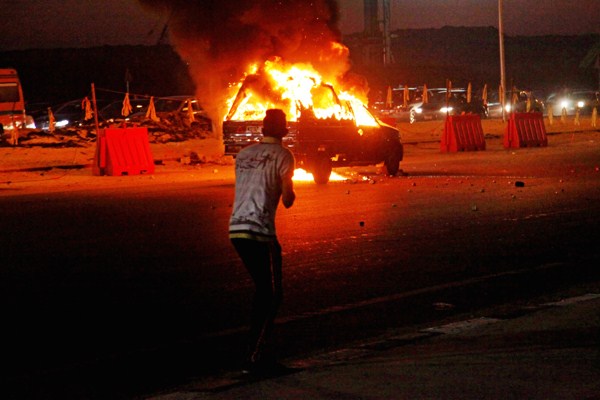Deadly clashes this week at a Cairo stadium between soccer fans and riot police point once again to the malignancy of police violence in Egypt, which helped spark the protests that toppled longtime dictator Hosni Mubarak exactly four years ago today. The issues of accountability with Egypt’s police have evolved over the course of the tumultuous post-Mubarak years. But the historic and transformational openings of early 2011 were squandered, and now the possibilities for security sector reform are as distant as ever, perhaps even more so.
In the days before the uprising of January 2011, skirmishes between soccer fans and Egyptian police were fairly common. Matches often offered a safety valve of sorts, where even politicized cheers cursing the government could be heard at moments of frustration. Yet such skirmishes also followed an unstated set of rules that limited overzealous policing to bumps, bruises and minor injuries. Today, however, the police truncheon has been set aside in favor of more draconian tactics. And the results are clear to all.
Though the exact circumstances are contested, survivors’ narratives suggest that riot police evinced a callous disregard for public safety, reportedly firing tear gas and birdshot from close proximity at the thronging crowds, who were already confined to a narrow, barbed-wire passage into the stadium. That caused a predictable and catastrophic stampede, resulting in at least 25 deaths.

